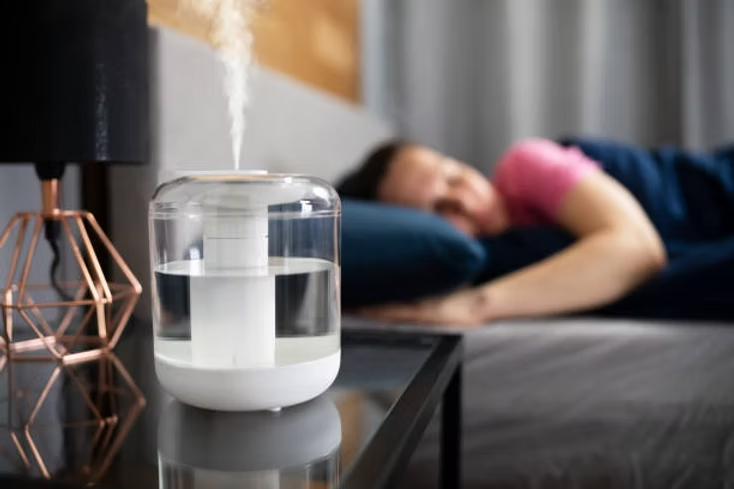How to Test and Improve Your Home’s Air Quality
- admin323029
- Blog

Indoor air quality is a critical factor in creating a safe and healthy home environment. With many Americans spending up to 90% of their time indoors, the quality of the air we breathe inside our homes plays a significant role in our overall well-being. Poor air quality can exacerbate allergies, trigger asthma, and even lead to long-term health issues. This guide explores how to test your home’s air quality and provides actionable steps to improve it.
Home Air Quality Testing and Improvement –
Why Test Your Indoor Air Quality?
Many pollutants in the air are invisible and odorless, making it difficult to know if your indoor air is truly clean. From mold spores and allergens to dangerous gases like carbon monoxide (CO) and radon, pollutants can build up indoors, especially in energy-efficient, sealed homes. Regular testing helps identify these threats early, so you can take the necessary steps to address them.
Common Indoor Air Pollutants
- Volatile Organic Compounds (VOCs): VOCs are emitted as gases from products like paints, cleaning supplies, and furniture. These chemicals can cause headaches, dizziness, and long-term health effects, including respiratory issues and cancer.
- Mold and Mildew: Mold thrives in damp areas such as bathrooms, basements, and around leaky windows. When mold spores are released into the air, they can cause allergies, asthma, and other respiratory issues.
- Particulate Matter (PM): Tiny particles, including dust, smoke, and pollen, can enter your lungs and bloodstream, causing irritation and potentially contributing to cardiovascular and respiratory diseases.
- Carbon Monoxide (CO): This odorless, colorless gas is produced by burning fuels like wood, gas, or oil. Exposure to high levels of CO can lead to poisoning or death, making it essential to monitor.
- Radon: Radon is a radioactive gas that naturally seeps from the ground. It is the second leading cause of lung cancer and often goes undetected without specific testing.
How to Test Your Indoor Air Quality
1. Use an Indoor Air Quality Monitor
Investing in an air quality monitor is one of the simplest ways to get real-time insights into your home’s air quality. These devices measure levels of pollutants like VOCs, particulate matter, and CO, as well as humidity levels. Some advanced monitors provide app connectivity, allowing you to track trends over time.
2. Radon Testing
Radon testing is essential, particularly in areas where radon levels are naturally higher. You can purchase a radon test kit or hire a professional for more comprehensive testing. Long-term tests, which last several months, provide the most accurate results.
3. Mold Inspections
Visible signs of mold, such as black or green spots, musty odors, or water stains, indicate a need for mold testing. Professionals use air sampling or surface testing to determine the presence and extent of mold. If you suspect mold but don’t see it, a thorough inspection of HVAC systems and hidden spaces is recommended.
4. HVAC and Ventilation Assessments
Poor ventilation can trap pollutants inside your home. Regular inspections of your HVAC system, including ductwork and filters, can identify issues like clogged filters or mold growth within the system.
5. DIY Test Kits
Affordable DIY test kits are available for specific pollutants like VOCs, formaldehyde, and allergens. While these kits offer a basic snapshot, professional testing is more reliable for critical issues.
How to Improve Indoor Air Quality
1. Enhance Ventilation
- Open windows regularly to allow fresh air to circulate.
- Use exhaust fans in kitchens and bathrooms to reduce moisture and cooking fumes.
- Consider installing a whole-house ventilation system for consistent airflow.
2. Control Humidity Levels
- Maintain indoor humidity levels between 30-50% using a dehumidifier or humidifier as needed.
- Repair leaks and address water damage immediately to prevent mold growth.
3. Upgrade Your Air Filters
- Use HEPA filters in your HVAC system and portable air purifiers to capture fine particles like dust and pollen.
- Replace HVAC filters every 1-3 months for optimal performance.
4. Minimize VOCs
- Choose low-VOC or VOC-free paints, furniture, and cleaning products.
- Store chemicals, paints, and solvents in well-ventilated areas or outside the living space.
5. Install Carbon Monoxide Detectors
- Place CO detectors near bedrooms and fuel-burning appliances.
- Test detectors monthly and replace batteries regularly to ensure they function properly.
6. Test for Radon and Address High Levels
- Seal cracks in your home’s foundation and improve ventilation in basements or crawl spaces to reduce radon levels.
- Install a radon mitigation system if necessary.
7. Reduce Allergens
- Wash bedding weekly in hot water to kill dust mites.
- Vacuum carpets and upholstery regularly using a vacuum with a HEPA filter.
- Keep pets out of bedrooms and off furniture to reduce pet dander.
When to Call a Professional
While some testing and improvements can be DIY projects, certain situations require professional expertise:
- Persistent health symptoms like headaches or respiratory issues.
- High radon levels detected through DIY testing.
- Mold infestations requiring remediation.
- Unusual odors or unexplained moisture issues.
Professionals can perform detailed inspections, provide laboratory-grade testing, and recommend tailored solutions to improve your indoor air quality.
Final Thoughts
Maintaining healthy indoor air quality requires vigilance, regular testing, and proactive improvements. By identifying and addressing common pollutants, you can create a safer, more comfortable living environment for you and your family. Whether you choose DIY tools or professional services, the key is to stay informed and take action to protect the air you breathe.
FAQs About How to Test Home Air Quality:
Why Is Monitoring Humidity Important?
Monitoring humidity in your home is vital for maintaining both comfort and health. High humidity creates an ideal environment for mold growth, which can trigger allergies and respiratory problems. On the other hand, low humidity levels can cause skin dryness, irritation, and even nosebleeds in rare cases. Monitoring and managing humidity can also prevent “sick building syndrome,” a condition linked to poor air quality in offices or homes that leads to chronic health issues. The optimal indoor humidity level is between 30% and 50%.
Do I Need to Test the Air in My Home?
Yes, testing your home’s air quality is important, particularly in specific situations:
- When moving into a new home: To ensure the air is free from pollutants left by previous occupants or construction.
- Frequent health symptoms: Such as coughing, sneezing, or headaches, which could be linked to poor air quality.
- After remodeling: Construction and remodeling activities often increase VOCs and other particulate matter in the air.
- Following a natural disaster: Events like floods can introduce mold and other contaminants that linger in the air.
Regular testing ensures your home’s air remains safe and healthy for your family.
What Can I Do if the Results Indicate Mold?
If your test results show the presence of mold, there are several steps you can take to address the issue:
- Clean the mold: Use a bleach and water solution or a commercial mold-cleaning product to remove visible mold. Always follow safety precautions.
- Upgrade your HVAC filter: High-efficiency filters can trap mold spores and improve overall air circulation.
- Consider UV light systems: Installing UV light in your HVAC system can help neutralize mold spores and prevent their spread.
- Consult professionals: For extensive mold issues, hiring a professional remediation service ensures thorough removal and prevention.
How Do I Decide Which Home Air Quality Test to Buy?
Choosing the right air quality test depends on your home’s unique needs. Consider these factors:
- Your lifestyle: Do you have pets? Use a fireplace? Recently remodeled your home? Each of these factors can introduce specific pollutants.
- Your location: Certain areas are more prone to radon or outdoor pollutants that can seep indoors.
- Your concerns: VOCs, mold, or allergens? Choose tests tailored to your primary concerns.
Research products to ensure they suit your needs and provide reliable results.
Which is Better: At-Home Air Quality Tests or Hiring a Specialist?
At-home air quality tests are an affordable and convenient option, especially for ongoing monitoring. Many modern devices use smart technology to connect with your phone, providing real-time updates on air conditions. However, some tests, like mold tests, may lack accuracy. For more precise or complex assessments, hiring a specialist is the best choice. Professionals use advanced tools and expertise to deliver comprehensive results, though the cost may be higher.
What Can I Do if I Have Poor Air Quality in My Home?
Improving indoor air quality involves several practical steps:
- Install an HVAC filter: High-quality filters can capture up to 99% of airborne pollutants. Read about MERV ratings in the following article by the EPA.
- Increase ventilation: Open windows, use exhaust fans, or install a whole-home ventilation system.
- Clean regularly: Dust, vacuum, and mop to reduce dirt, pet dander, and allergens.
- Consider air purifiers: Portable air purifiers with HEPA filters are effective in smaller spaces.
Consistent effort is key to creating a healthier indoor environment. The New York Times 7 Best Air Purifiers
How Often Should I Test My Home Air Quality?
The frequency of testing depends on the pollutant:
- Carbon Monoxide (CO): Continuous monitoring with a CO detector is recommended.
- Radon: Test at least once per year, especially if your area is prone to high levels.
- VOCs and allergens: Regular testing is advisable since these can accumulate from daily activities.
How Can I Reduce VOCs in My Home?
Reducing VOCs involves a combination of proactive measures:
- Increase ventilation: Open windows or use air purifiers with activated carbon filters.
- Choose safer materials: Opt for low-VOC or VOC-free paints, furniture, and cleaning products.
- Avoid potential VOC sources: Minimize the use of aerosol sprays, air fresheners, and other chemicals.
- Seal off sources: Ensure proper sealing of building materials like particleboard that may emit VOCs.
How Much Does It Cost to Test Home Air Quality?
Testing costs vary depending on the method:
- At-home test kits: These range from $15 for basic CO tests to $150 for advanced VOC kits.
- Professional services: Hiring an indoor air quality specialist typically costs between $500 and $600, depending on the service provider and scope of the inspection.
- Radon testing: DIY kits cost $150-$800, but professional testing is recommended for accuracy.
How Do You Know if You Have Poor Indoor Air Quality?
Symptoms of poor indoor air quality can range from mild to severe:
- Short-term exposure: Frequent headaches, dry eyes, or respiratory irritation.
- Long-term exposure: Chronic allergies, fatigue, or even serious conditions like asthma.
- Visible signs: Mold growth, lingering odors, or excess dust buildup. For definitive answers, conduct a home air quality test to identify the specific pollutants affecting your air.
Are you worried about the cleanliness of your space?
Let us help you! Cleaning services are our specialty, and we offer a complete range of cleaning and maintenance services. Get a free estimate!




